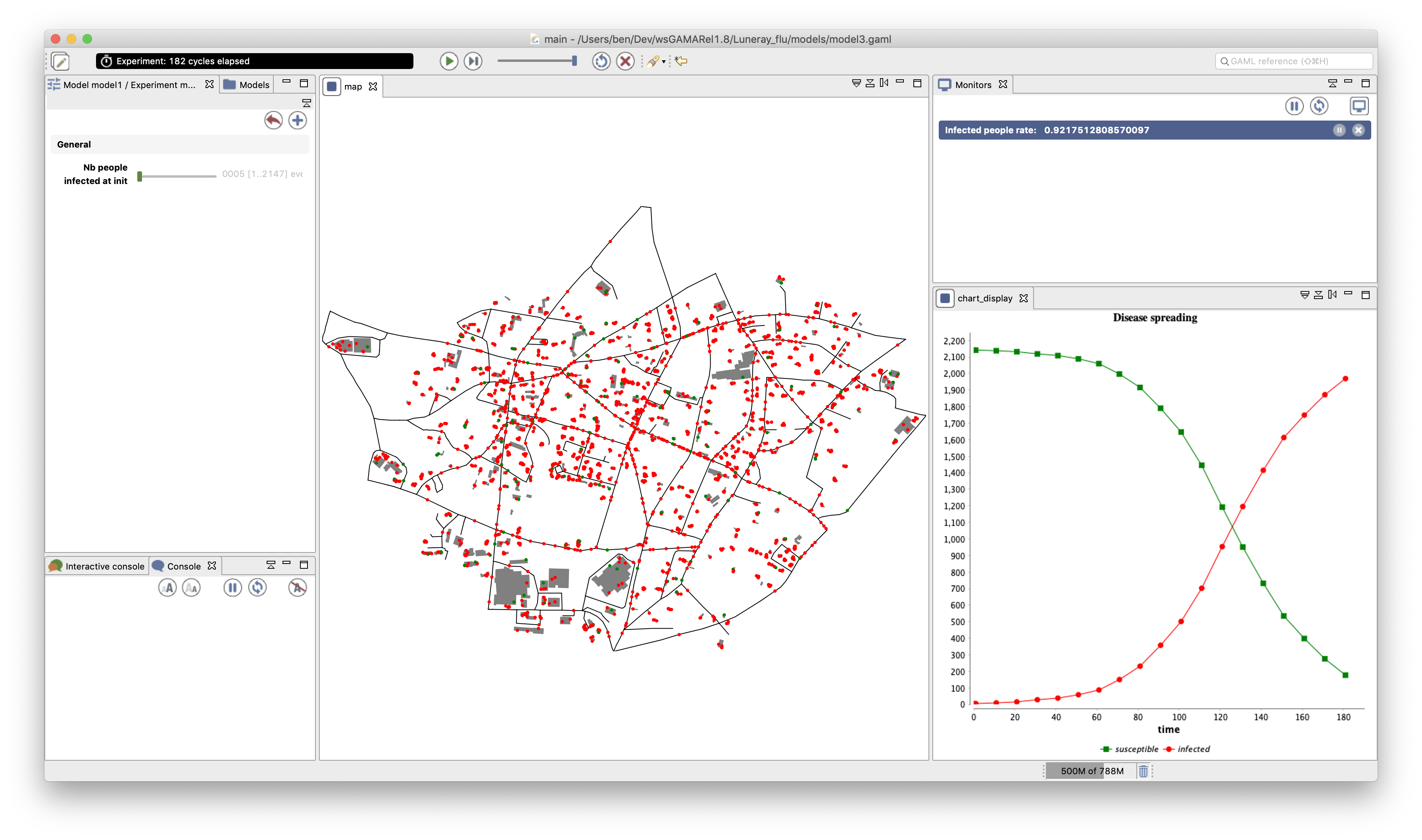4. Use of a graph to constraint the movements of people
This fourth step illustrates how to use a graph to constraint the movements of agents

Formulation
- Define a new global variable: the road network (graph).
- Build the road network graph from the road agents
- Add new attribute to the people agents (target)
- Define a new reflex for people agents: stay.
- Modify the move reflex of the people agents.
Model Definition
global section
global variables
In this model, we want people agents to move from buildings to buildings by using the shortest path in the road network. In order to compute this shortest path, we need to use a graph structure.
We thus define a new global variable called road_network of type graph that will represent the road network.
global{
//... other attributes
graph road_network;
//... init
}
In order to compute the graph from the road network, we use, just after having created the road agents, the as_edge_graph operator. This operator automatically built a graph from a set of polylines. Each extremity point of the lines will become a node in the graph, and each polyline an edge. By default, the graph is not oriented and the weights of the edges are the perimeters of the polylines. It is of course possible to change through the use of some operators.
global {
// world variable definition
init{
create road from: roads_shapefile;
road_network <- as_edge_graph(road);
create building from: buildings_shapefile;
create people number:nb_people {
location <- any_location_in(one_of(building));
}
ask nb_infected_init among people {
is_infected <- true;
}
}
}
people species
We want to modify the behavior of the people agents in order to make them move from buildings to buildings by using the shortest path in the road network.
Variables
In order to implement this behavior, we will add two variables to our people species:
targetof typepointthat will be the location where the agent wants to go
species people skills:[moving]{
//...the other attributes
point target;
//....
}
Behavior
First, we add a new reflex called stay that will be activated when the agent is in a house (i.e. its target is null) and that will define with a probability of 0.05 if the agent has to go or not. If the agent has to go, it will randomly choose a new target (a random location inside one of the building).
reflex stay when: target = nil {
if flip(0.05) {
target <- any_location_in (one_of(building));
}
}
Then, we modify the move reflex. This one will be only activated when the agent will have to move (target not null). Instead of using the wander action of the moving skill, we use the goto one that allows to make an agent moves toward a given target. In addition, it is possible to add a facet on to precise on which topology the agent will have to move on. In our case, the topology is the road network.
When the agent reaches its destination (location = target), it sets its target to null.
reflex move when: target != nil{
do goto target: target on: road_network;
if (location = target) {
target <- nil;
}
}
Complete Model
loading...